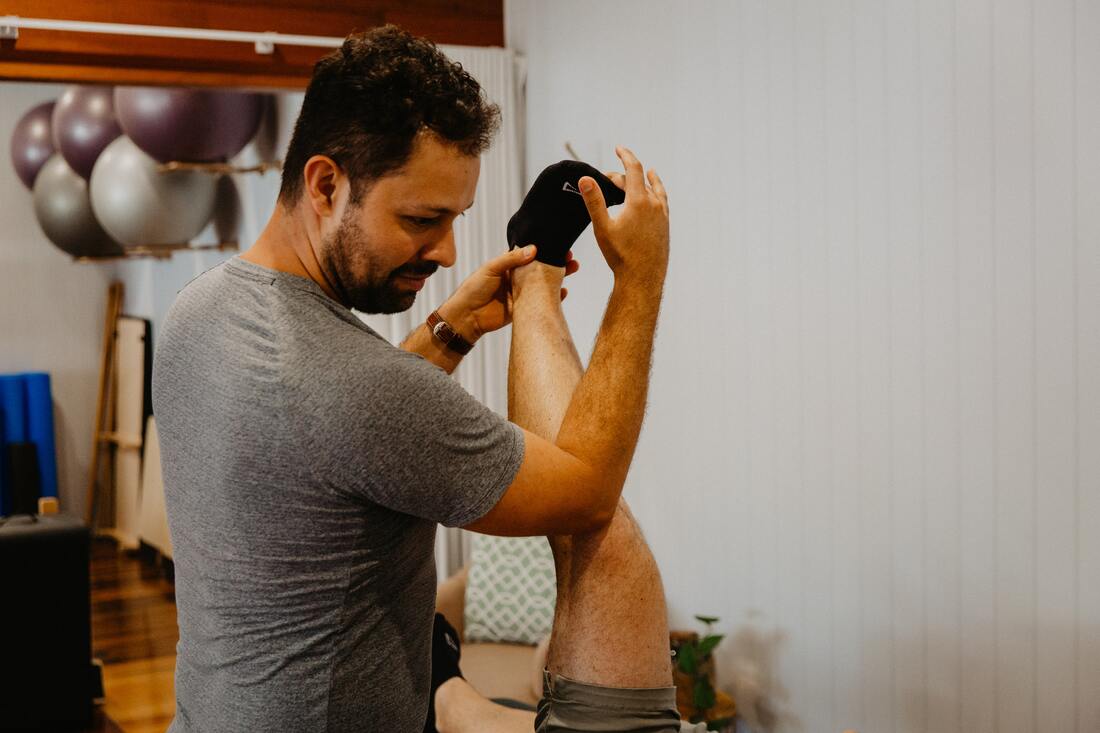Physiotherapy for Sever's Disease.
Sever's disease, also known as calcaneal apophysitis, is a common condition that affects children and adolescents who are going through a growth spurt. It is a painful condition that affects the heel bone and can make it difficult for kids to participate in sports or other physical activities.
What is Sever's disease?
Sever's disease is caused by inflammation of the growth plate in the heel bone, which is still developing in children and adolescents. The growth plate is a soft area of cartilage that eventually turns into bone as the child grows. When there is repetitive stress or tension on the growth plate, it can become inflamed and cause pain.
Some of the risk factors for Sever's disease include:
Symptoms of Sever's disease may include:
How is Sever's disease diagnosed?
Sever's disease is usually diagnosed by a healthcare professional, such as a physiotherapist, podiatrist, or sports medicine doctor, based on a combination of the child's medical history, symptoms, and a physical examination. During the exam, the healthcare professional will typically:
In some cases, imaging tests such as X-rays or ultrasound may be ordered to rule out other conditions or to confirm the diagnosis. X-rays can also be used to assess the growth plate and to rule out any fractures or other bone injuries.
It's important to note that Sever's disease is usually diagnosed based on clinical examination and imaging tests are typically not necessary. However, if the healthcare professional suspects a more serious injury or underlying condition, they may order additional tests.
How can physiotherapy help?
Physiotherapy can be an effective treatment for Sever's disease, especially if it is caught early. Here are some ways that physiotherapy can help:
In severe cases, a physiotherapist may also recommend the use of orthotics or heel pads to provide additional support and cushioning for the foot.
Overall, early intervention and proper management are key to treating Sever's disease and preventing long-term complications. If your child is experiencing heel pain, please don't hesitate to reach out. We would love to help them get back to sports and life pain free.
What is Sever's disease?
Sever's disease is caused by inflammation of the growth plate in the heel bone, which is still developing in children and adolescents. The growth plate is a soft area of cartilage that eventually turns into bone as the child grows. When there is repetitive stress or tension on the growth plate, it can become inflamed and cause pain.
Some of the risk factors for Sever's disease include:
- Participating in sports that involve running, jumping, or other high-impact activities
- Wearing shoes that do not provide enough support or cushioning
- Having tight calf muscles or Achilles tendons
- Being overweight or obese
Symptoms of Sever's disease may include:
- Pain in the heel, especially during physical activity
- Swelling or redness in the heel
- Difficulty walking or running
- Stiffness in the foot or ankle
How is Sever's disease diagnosed?
Sever's disease is usually diagnosed by a healthcare professional, such as a physiotherapist, podiatrist, or sports medicine doctor, based on a combination of the child's medical history, symptoms, and a physical examination. During the exam, the healthcare professional will typically:
- Ask about the child's symptoms, including when they started and what activities make them worse or better.
- Perform a physical examination of the affected foot and ankle, checking for signs of pain, swelling, redness, and limited range of motion.
- Palpate or press on the heel bone to see if it is tender or painful.
- Observe the child's gait or walking pattern to see if there is any limping or abnormal foot posture.
In some cases, imaging tests such as X-rays or ultrasound may be ordered to rule out other conditions or to confirm the diagnosis. X-rays can also be used to assess the growth plate and to rule out any fractures or other bone injuries.
It's important to note that Sever's disease is usually diagnosed based on clinical examination and imaging tests are typically not necessary. However, if the healthcare professional suspects a more serious injury or underlying condition, they may order additional tests.
How can physiotherapy help?
Physiotherapy can be an effective treatment for Sever's disease, especially if it is caught early. Here are some ways that physiotherapy can help:
- Stretching and strengthening exercises: A physiotherapist can work with the child to develop a customized exercise program that includes stretching and strengthening exercises for the calf muscles and Achilles tendon. This can help reduce tension on the growth plate and improve flexibility and strength.
- Manual therapy: A physiotherapist can use manual therapy techniques, such as massage or mobilization, to help reduce pain and inflammation in the heel.
- Education: A physiotherapist can educate the child and their parents about the importance of proper footwear, stretching, and other self-care strategies to prevent future episodes of Sever's disease.
- Activity modification: A physiotherapist can work with the child to modify their activity level or recommend alternative activities that are less likely to aggravate the condition.
In severe cases, a physiotherapist may also recommend the use of orthotics or heel pads to provide additional support and cushioning for the foot.
Overall, early intervention and proper management are key to treating Sever's disease and preventing long-term complications. If your child is experiencing heel pain, please don't hesitate to reach out. We would love to help them get back to sports and life pain free.
Who to book in with:
Yulia Khasyanova
|
Emma Cameron
|
Monica Hanna
|
If you are unsure about which appointment type is right for you, please don't hesitate to get in touch with our friendly reception staff by calling 07 3706 3407 or emailing [email protected].



